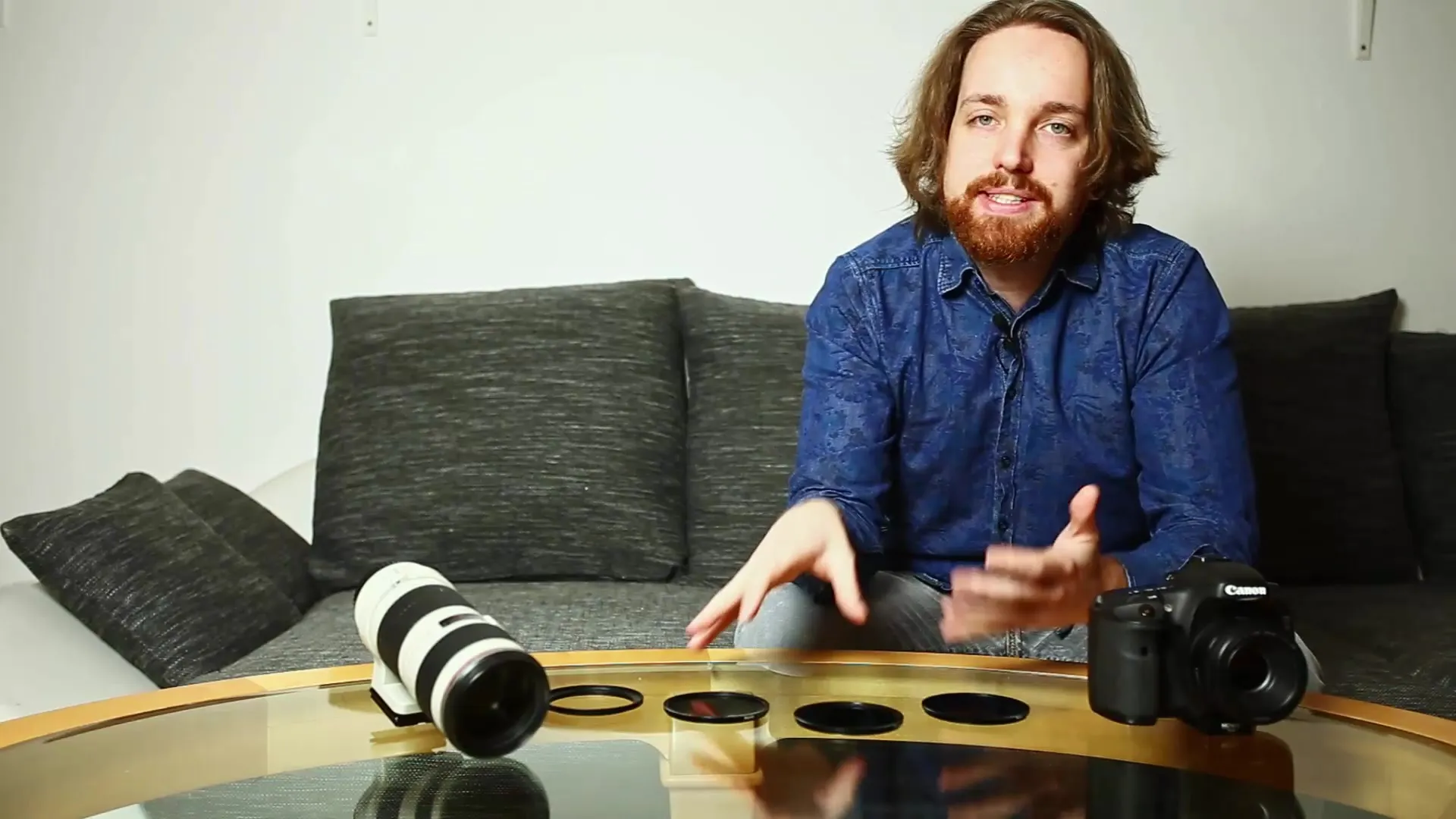Neutral Density Filters are valuable tools for photographers who want to create long exposures. They help control the amount of light that hits the camera sensor and allow for capturing impressive images that are usually not achievable without additional aids. In this guide, you will learn how to correctly interpret and apply the various specifications of neutral density filters to get the most out of your long exposures.
Key Insights
- Neutral density filters are described by factors, aperture values, and density specifications.
- The factor indicates how much longer the exposure time will be when using the filter.
- Aperture values show how many stops the light is reduced.
- The density specification (ND-value) serves primarily informative purposes and is not the most practical parameter.
Step-by-Step Guide
1. Understanding Neutral Density Filter Factors
Neutral density filters typically have three different specifications that explain how they affect the darkening for your camera. Let's start with the most important factor. This is given in the form of numbers followed by an "x", e.g., 8x, 64x, or 1000x. The factor describes how much longer the exposure time will be when you screw the filter onto your camera. For example, if you have an 8x neutral density filter, it means that your exposure time will be eight times longer.

2. Applying the Factor
Assuming your original exposure time is 1/100 second. If you attach an 8x neutral density filter, the exposure time extends to 1/15 second. With a 64x neutral density filter, the time extends from 1/100 second to 1.6 seconds. With a 1000x neutral density filter, the exposure time could extend to 10 seconds, allowing you to make impressive long-exposure shots, such as of flowing water.
3. Understanding Aperture Value
In addition to the factor, neutral density filters also specify the aperture value, usually in EV or stops. A 12-stop filter, for example, reduces the light by 12 stops. An aperture value is the change that the exposure of your camera results in when you click three times on the setting dial. You can set the exposure in thirds, meaning that when changing an aperture value, you usually have to click three times.
4. Calculating Aperture Stops
If your original value is 1/100 second and you want to correct it down by one aperture value, you click three times and arrive at 1/50 second. The principle of aperture stops is logarithmically arranged, so every halving or doubling of the amount of light means that you need to click three times to switch from one aperture to the next.

5. Understanding Density Specifications
The last specification on a neutral density filter is the density specification, which indicates how the light transmission through the filter is affected. This physical number, also called ND-value, is of little practical use, but it is still important to know. For example, an 8x neutral density filter has an ND-value of 0.9, a 64x neutral density filter has a value of 1.8, and a 12-stop filter even 3.6.
6. Misunderstandings About ND-Values
It is common for manufacturers to incorrectly specify the ND-value instead of the factor. An ND-value of 1000 does not exist, as this would make the filter unrealistically dark. If you come across a product described as "ND 1000", it is likely just a 1000x neutral density filter. Be sure to make this distinction when analyzing the specifications.

Summary - Long Exposures with Neutral Density Filters: Crucial Information and Application
Neutral density filters are versatile tools that must be used strategically to achieve the desired outcome. Knowledge of the various factors and how to apply them is crucial for successful long exposures.
Frequently Asked Questions
How does a neutral density filter affect exposure time?A neutral density filter extends the exposure time according to the indicated factor.
What is an aperture value?An aperture value indicates how many stops the light is reduced according to the specification, usually in thirds.
Are ND-values important for practical application?ND-values are more informative and indicate how dense the filter is, but practical use is limited.
How do I calculate the new exposure time with a neutral density filter?You multiply your original exposure time by the indicated factor of the filter.
What should I know about incorrect ND-values?Many manufacturers incorrectly specify the ND-value when they mean the factor.


